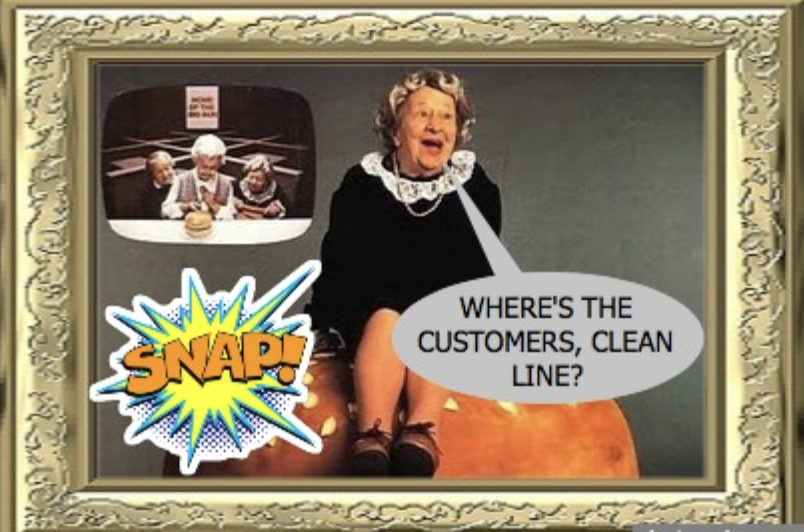They haven't. Not once.
Sometimes, they even let guys get up and speak about how successful they are, even though their project has not been built. And then the project fails. I'm guessing they weren't very successful in "participating with the public" if opposition crashed their project.
Like about how they "leveraged lessons learned" and "American Electric Power and Allegheny Energy are applying best practices to help gain approvals for the Potomac-Appalachian Transmission Highline (PATH), a 765-kV project extending 275 miles through West Virginia, Virginia, and Maryland. Learn how the two companies are working together to apply successful strategies for grassroots outreach, community involvement, and public education while contending with project delays, entrenched opposition, and the economic downturn." Not only was the PATH project cancelled just a month or so later, but the costs of all the activities these weasels advised their compatriots to undertake were later found not to be recoverable from ratepayers in a regulatory proceeding. Nice work, fellas! And, BTW, if you read the linked blog post and are wondering if my pals ever sent me a copy of their power point presentation, the answer is yes. It came in a packet of data responses during an administrative hearing at FERC. It really wasn't all that. Borrrrring!
And then there was the year EUCI added a public participation website contest to the festivities. Yes, they actually sent StopPATH's entry to their judges, and the judges did their duty. I am missing the evaluation comments or scoring sheet though, but I do have a very vivid imagination! And, again, if you read the linked blog post you'll be happy to know that I did present an award to BlockRICL at a transmission opposition convention shortly thereafter. What? Transmission opponents have their own gatherings? Sure! The utility guys would learn way more stuff there, but we don't invite them. Nor let them in when we see them at the windows with their noses pressed to the glass.
And then there was the year they advertised their conference as helpful for "community group representatives." That's a euphemism for you. They actually thought opposition leaders were going to show up for their conference. I guess all that pretending success among themselves was getting sorta boring, and nothing livens the place up like transmission opponents bearing torches and pitchforks.
So what's on the agenda for this year's Best Practices in Public Participation for Transmission Siting conference? More bluff and bluster about how "effective" these buffoons have been at "participating with the public." There's several presentations about transmission projects in Wisconsin and how the companies practiced "media relations and messaging in the face of public opposition" to get their project approved. I'm pretty sure it wasn't "public participation" that bagged that trophy. It was more likely "private participation" the company may have engaged in behind closed doors.
These transmission companies think they're "building trust" with the public. Who "trusts" a transmission company that has its eye on your property for one of their profit-making schemes? Do you really think these guys are telling you the truth? Because part of the program includes calling you a liar.
Emotional challenges to a project can cause projects sponsors to respond with facts, but those facts are often drowned out if the parties are unwilling to compromise. In this presentation, we will have an in-depth analysis of how to respond to exaggerated or false claims and how to manage project opposition explained with real-life case study/scenarios.
And then there's a bunch more clueless expounding about "what are stakeholders' concerns?" Transmission companies don't know what your concerns are, because they don't listen to (or much care) what you think. They brush away your every concern as nothing to be concerned about. I'm guessing NONE of the participants of this conference have ever been a transmission opponent, nor do they take anything transmission opponents say seriously. Quit pretending you know how we think, okay?
American Electric Power (parent company of Transource) will be making a presentation about their effective communication strategy that "can neutralize opposition and gain acceptance of transmission line projects." So, the question is, when are they going to start utilizing that amazing strategy on their own Transource project? Transource opposition is strong and building. It's not being "neutralized." And when you say stuff like that, it only makes the opposition more determined to kill your project than ever. "Base to AEP: Communication strategy FUBAR. Failure imminent. Disengage. Retreat. Over."
And don't miss the Public Outreach Executive Forum, where Transource's own Todd Burns will join a panel instructing his peers on how to "shape organizational culture, policies and practice in a public centered organization." It sorta sounds like he thinks you're made out of silly putty. But I'm betting, in the end, Todd's the one who's going to be bent out of shape. Although, maybe Todd can pick up a few pointers at this conference? I mean, his strategy is obviously not working on the Transource project.
It's just another gathering of the clueless in their self-congratulatory echo chamber of failure.
Rock on, transmission opponents, rock on!



 RSS Feed
RSS Feed